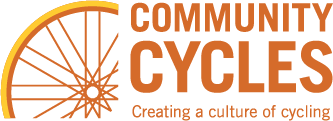This opinion by Community Cycles Executive Director Sue Prant ran in the 6/15/24 Daily Camera:
Arterial streets are crucial to Boulder’s transportation system. They are direct routes through town, hosting a significant portion of shopping, employment and housing destinations. They also are problematic.
Most of our arterials were designed in the 1960s and 1970s, when moving motor vehicles quickly was the first, and sometimes only, priority for transportation engineers. While arterials make up just 17% of Boulder’s street system, they account for two-thirds of the city’s fatal and severe traffic crashes. And besides being dangerous, in too many places they are uncomfortable and unwelcoming to walk or bicycle.
In 2022 City Council unanimously agreed to move forward with the Core Arterial Network project. CAN is intended to improve safety for all modes and ensure walking and biking are efficient and comfortable on a key set of interconnected arterials.
The first street addressed was Baseline, where protected bike lanes were installed and improved bus stops are planned. Second is Iris, which suffers from excessive traffic speeds, dangerously narrow bike lanes, inadequate and uncomfortable sidewalks, and barren bus stops.
The city has put forward four possible designs for a safer Iris. All four add protected bike lanes. Options A and C propose one-way protected bike lanes on each side of the street. Options B and D propose a two-way protected lane on the north side.
Alternatives A and B would convert the street from the current four lanes to three lanes – two through lanes and a center turn lane – and would require no expansion of the current right of way. Alternatives C and D would retain four general-purpose lanes, with no dedicated turn lane. C and D would require private property acquisition to widen the right-of-way, would remove mature trees, and would entail a major road reconstruction project to relocate utilities.
Compared to alternatives C and D, A and B would be more effective at slowing speeds and improving safety along the corridor and at intersections. They would allow safer pedestrian crossings – including for the many Columbine Elementary students who have to cross the street daily – since more lanes mean more risk. And A and B are better for emergency vehicles that can use the center lane to get around cars stopped for sirens.
Traffic would still flow smoothly in the three-lane configurations, just at safer speeds. That is because intersections are the primary cause of congestion on Iris and the designs would preserve the existing number of lanes at the “bookends”: the intersection with Broadway on the west, and the section from Folsom to 28th Street on the east.
We have seen this work before. On Broadway north of Norwood and on Arapahoe between Broadway and Folsom, streets with similar traffic volumes to Iris, the three lane configuration does not cause delays.
Some residents have expressed concern that drivers might cut through neighborhoods adjacent to Iris. Regardless of the design chosen for Iris, the city is putting forward a plan to address this reasonable concern through installation of speed mitigation features on Kalmia, Hawthorn and other nearby streets as part of this project.
It’s important to note that for people biking, those side streets are not an adequate alternative to protected lanes on Iris. Off-Iris routes are circuitous and include safety dangers of their own where they cross 19th St. and Folsom. And they do nothing to fix the current dangers to pedestrians and motorists.
The cost and time estimates for A or B are $5 million and 3 years, respectively, For C and D they are $20 million and over 20 years. Using CDOT’s own inflation formula, that $20 million cost today will balloon to $135 million when the road is actually constructed.
During this 20 year delay, more people will get seriously injured or possibly die in crashes on Iris. We already have seen more than one crash every week between 2016 and 2023. Waiting 20 years is ethically unjustifiable and would effectively abandon the core objectives of the Core Arterial Network for an entire generation.
Because of all these considerations, Community Cycles supports option A or B. These are the quicker, safer, more sustainable, and more cost-effective alternatives. When Boulder looks to our core values, these two options are the easy choice.

